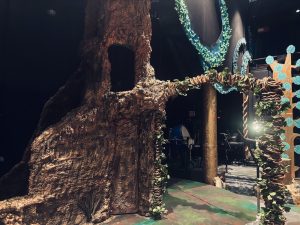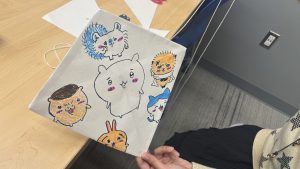
Three candidates for the Vice President of Diversity, Equity and Inclusion (DEI) and Chief Diversity Officer position have engaged in forums with Bradley students over the last two weeks from Nov. 1-9 at the Garrett Center.
So far, students have brought up topics such as intersectionality, race, sexuality, disabilities, funding, microaggressions and more with the three candidates that have been present on campus.
The three considered persons are Malika Carter, Dana Murrey-Patterson and Warren Anderson. The forum with the fourth candidate, Jeffrey Coleman, was originally scheduled for Nov. 11 but has been canceled with no reschedule date shared, according to an email from Nathan Thomas to those attending.
Here are recaps of the candidates so far in the order of appearance.
Malika Carter
Malika Carter comes from the State University of New York College – Syracuse as the chief diversity officer but has been in positions relating to diversity starting from 2005 as the Assistant Director for the Office of Multicultural Programs at North Dakota State University.
Along with diversity positions, Carter shared that she was part of Rotary International, a group known for community service. On her curriculum vitae (CV), available at request from Bradley University, she is a member of the Society of Human Resources Management and involved with the Association of American Medical Colleges’ Group on Diversity and Inclusion.
Carter sees that Bradley has a chance to move the university forward with inclusionary initiatives. She took the time to have students outwardly reflect and self-reflect.
“We think we may know what we think about ourselves, we may think we’re settled in our belief systems, but there’s always room for self-discovery,” Carter said.
She emphasized that the university administration must listen to students to find solutions wanted by students.
“We may think that inclusion and diversity and equity that there is one way of doing it, or even assume individuals’ intentions, but often that’s not what it is because we don’t take time to think about them,” Carter said.
A student asked Carter what diversity means to her, to which Carter noted various movements for LGBTQ+ rights, disabilities acts and the dissipation of segregation which she said allows everyone today to gather in one space.
“We realize now that we have so much more protection, but so much more to strive for,” Carter said.
Dana Murray-Patterson
Dana Murray-Patterson is currently the Director of Intercultural Affairs at Western Carolina University. She has a doctorate in higher education with a concentration in cultural studies and social thought in education from Washington State University.
Her CV says she has hosted workshops and trainings such as Black Women in Higher Education: Strategies that Work, Containing White Supremacy, Women in Leadership and more. She’s certified for safe zone facilitating and training along with the Intercultural Development Inventory (IDI), the Mental Health First Aid and more.
She anticipates this position making a change in the cultural environment on campus for students and influencing conversations amongst administrators.
“The issues that are important to you and the things that matter the most to you as students navigating in this environment were historically underrepresented, or currently underrepresented,” Murray said. “This is an opportunity to have a voice now at big meetings where individuals are making lots of decisions that affect you every day.”
She has plans to involve students further with DEI efforts. Murray-Patterson wants to form an advisory board of students from different backgrounds. Who exactly would be in that board is still unclear to her and wouldn’t be detailed until in the position.
“It’s so easy to get stuck in your office, doing paperwork, and not really experiencing the community at campuses,” Murray-Patterson said. “I really want to build relationships by having conversations and getting to know you all.”
Murray-Patterson said to students that she’s interested in the position to see changes at a smaller university versus the 12,000 students she’s used to serving, and she hopes to have students of various identities feel comfortable in all areas of campus and not exclusive to the Office of Diversity and inclusion.
Warren Anderson
Although he does not work with students directly, Warren Anderson is a Senior Equity, Diversity and Inclusion Officer for the University of Wisconsin System, which oversees 13 universities. The system is meant to support students of color in the participating institutions.
Anderson shared that in his hometown of Philadelphia, where the city is facing an opioid epidemic, he worked with high school students to have them aim for higher education despite the conditions around them.
As his current position is dealing mostly with policy, Anderson said he wants student interaction. However, Anderson said he is looking for a university that is demanding and working for change and valuing that work as well.
“Don’t just come with the problems; come with what you think the solution is because you all know better than anyone that’s going to come through that door of what it’s going to take to move this institution forward,” Anderson said.
He said that changes for diversity on campus won’t be coming all at once, but to hopefully be everlasting beyond current students’ years here and possibly even himself. One of those changes involves safe spaces.
Anderson said that he isn’t a fan of the term “safe space,” mostly as it implies that the university has unsafe areas for students. He even notes that the VP of DEI’s office placement alone plays a factor in this.
“As opposed to making this a very safe space for all of you, how about we start tearing down and breaking down spaces that are unsafe and or don’t have [DEI] as a true value of the institution?” Anderson said.




